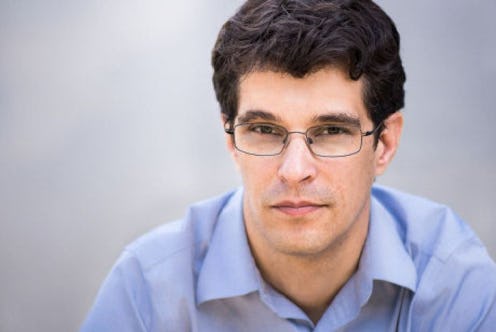Books
This Book Redefines the Meaning of Magic

Magic: the art of illusion, the masterful practice of sleight of hand and deceit, the tools through which magicians can make others believe, if only temporarily, in something they know to be impossible. Such magic, and its evolution in the early 20th century, is the subject of Steven Galloway’s latest novel The Confabulist (Riverhead). In it, he explores the veracity of memory, the fictionalization of identity, and the role of magic and illusion in our everyday lives through the story of infamous illusionist Harry Houdini.
The novel opens with narrator Martin Strauss, a magic enthusiast and rather ordinary man whose story is told alongside Houdini’s in alternating chapters. Strauss is Galloway’s fictional version of the real life fan who allegedly punched Houdini in the stomach at a Montreal theater in 1926. In this opening chapter we find Strauss in a therapy session. Strauss' therapist is informing him that he in the process of losing his mind, and to compensate for his loss of memories, his brain will begin to reinvent new ones. Though the details are vague, we are quickly told what Strauss’ relationship is to Houdini: He killed him, "not once, but twice." How he did so unfolds gradually throughout the rest of the novel.
From then on, the narrative alternates between the lives of Strauss and Houdini, traveling back and forth between time, inching with each segment, closer and closer to present-day and the moments when their disparate lives collide. With Strauss as an unreliable narrator, Galloway plays on the reader’s own sense of reality and illusion, calling us to question the veracity of each recollection. As much as the novel is a stylish reimagining of Houdini's biography, it is also a deep exploration of the meaning of magic. Houdini's narrative serves as a lens through which Galloway examines our notions of truth and illusion, of reality and fiction, and our ability, or inability, to distinguish one from the other.
Beginning in 1897 on the stage of an opera house in Garnett, Kan. at the apex of Houdini's career, as Galloway hustles us through the magician's life, we are given a tour of a marvelous and seedy world of mystery in which Houdini is not only a preeminent magician, but also a spy working with U.S. and British intelligence as he entertains foreign diplomats, a womanizer maintaining multiple affairs, and a truth-seeker crusading against the ring of devious, false spiritualists that dominated the social and political landscape of the time.
Strauss's own narrative and internal musings continue to punctuate the novel, filling the back story of his life in Montreal and connecting the dots between his incidental connections with Houdini. Some of the most captivating prose comes when Strauss is philosophizing about magic. "We know what we see isn’t as it seems, but we want it to be and want to understand it," he says. "I believe this is more than just intellectual curiosity. We strive for immortality in the face of its impossibility." Of magicians he says, "They made me believe there was more to the world than I was able to see. Or better, that it was possible for multiple worlds to exist at once.”
Strauss's gradual loss of identity via the dissolution of his memories and his inadvertent crafting of new ones parallels Houdini’s own deliberate reinvention of self, his meticulous transformation from Ehrich Weiss (Houdini's real name), a Russia-born immigrant and son of an impoverished rabbi, to the mystical and grandiose Harry Houdini. Just like magic, memory and identity too can be an illusion.
At one point, his wife says, “To survive, as we all must, you invented a persona, a shell to show the world. But at some point that shell took over. I don’t think you know which parts of you are real and what parts are made up, and I think that frightens you.” This is just one of the many ways in which Galloway envisions magic as a metaphor for the way we live out our lives, in a constant state of half-truths, blurred reality and fiction.
Houdini eventually becomes so concerned with debunking false magicians and spiritualists, exposing their fictions and explaining away the mystery, that he loses touch with the joys of magic as well as his own sense of self. “He had become such a slave to logic and reason that he was blind to the possibilities of the world,” the narrator tells us.
Like all the best magic tricks, Galloway saves the novel's epic reveal for last. While the novel covers a lot of ground, Galloway's main pitfall is that it seems he tries to cram too much into too little space. Several of the characters seem only half-formed, leaving the reader feeling a bit distanced from the narrative, and though the conclusion is a compelling one that satisfactorily rounds out the narrative, the story still seems unfinished somehow. But maybe that is, in part, the point: to give the reader space to fill in her own fictions and ponder the provocative questions posed.
Image: Frances Raud